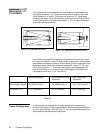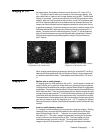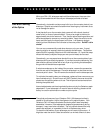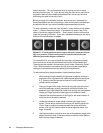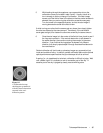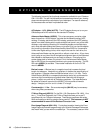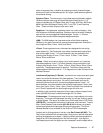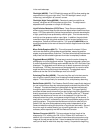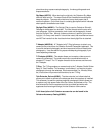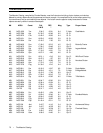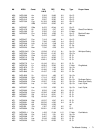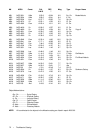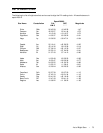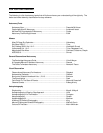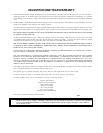68 • Optional Accessories
in the main telescope.
Flashlight (#93592) - The LED flashlight uses a red LED to allow reading star
maps without ruining your night vision. The LED flashlight is small, only 6
inches long, and weighs in at a mere 3 ounces.
Flashlight, Night Vision (#93588) - Celestron’s premium model for as-
tronomy, using two red LEDs to preserve night vision. The brightness is
adjustable and it operates on a single 9 Volt battery.
Light Pollution Reduction (LPR) Filters - These filters are designed to
enhance your views of deep-sky astronomical objects when viewed from urban
areas. LPR Filters selectively reduce the transmission of certain wavelengths
of light, specifically those produced by artificial lights. This includes mercury
and high and low pressure sodium vapor lights. In addition, they also block
unwanted natural light (sky glow) caused by neutral oxygen emission in our
atmosphere. Celestron offers a model for 1-l/4" eyepieces (#94126A) and a
model that attaches to the rear cell ahead of the star diagonal and visual back
(#94127A).
Micro Guide Eyepiece (#94171) - This multipurpose illuminated 12.5mm
reticle can be used for guiding deep-sky astrophotos, measuring position
angles, angular separations, and more. The laser etched reticle provides razor
sharp lines and the variable brightness illuminator is completely cordless.
Piggyback Mount (#93598) - The best way to enter the realm of deep-sky
photography is via the piggyback method. Piggyback photography allows you
to record constellations and large scale nebulae that don’t fit in the field of your
telescope. The piggyback mount allows you to attach a camera to the top of
the telescope. This way, the camera can photograph with its normal or wide
angle lens while you guide through the telescope. The piggyback mount
attaches to the rear cell of the telescope next to the finder.
Polarizing Filter Set (#93608) - The polarizing filter set limits the transmis-
sion of light to a specific plane, thus increasing contrast between various
objects. This is used primarily for terrestrial, lunar, and planetary observing.
Radial Guider (#94176) - The Celestron Radial Guider is specifically designed
for use in prime focus, deep-sky astrophotography and takes the place of the
T-Adapter. This device allows you to photograph and guide simultaneously
through the optical tube assembly of your telescope. This type of guiding
produces the best results since what you see through the guiding eyepiece is
exactly reproduced on the processed film. The Radial guider is a “T”-shaped
assembly that attaches to the rear cell of the telescope. As light from the
telescope enters the guider, most passes straight through to the camera. A
small portion, however, is diverted by a prism at an adjustable angle up to the
guiding eyepiece. This guider has two features not found on other off-axis
guiders; first, the prism and eyepiece housing rotate independently of the
camera orientation making the acquisition of a guide star quite easy. Second,
the prism angle is tunable allowing you to look at guide stars on-axis. This
accessory works especially well with the Reducer/Corrector.
Reducer/Corrector (#94175) - This lens reduces the focal length of the
telescope by 37%, making your CM-1100 a l,764mm f/6.3 instrument. In
addition, this unique lens also corrects inherent aberrations to produce crisp
images all the way across the field. It also increases the field of view signifi-
cantly and is ideal for wide-field, deep-sky viewing. It is perfect for beginning



